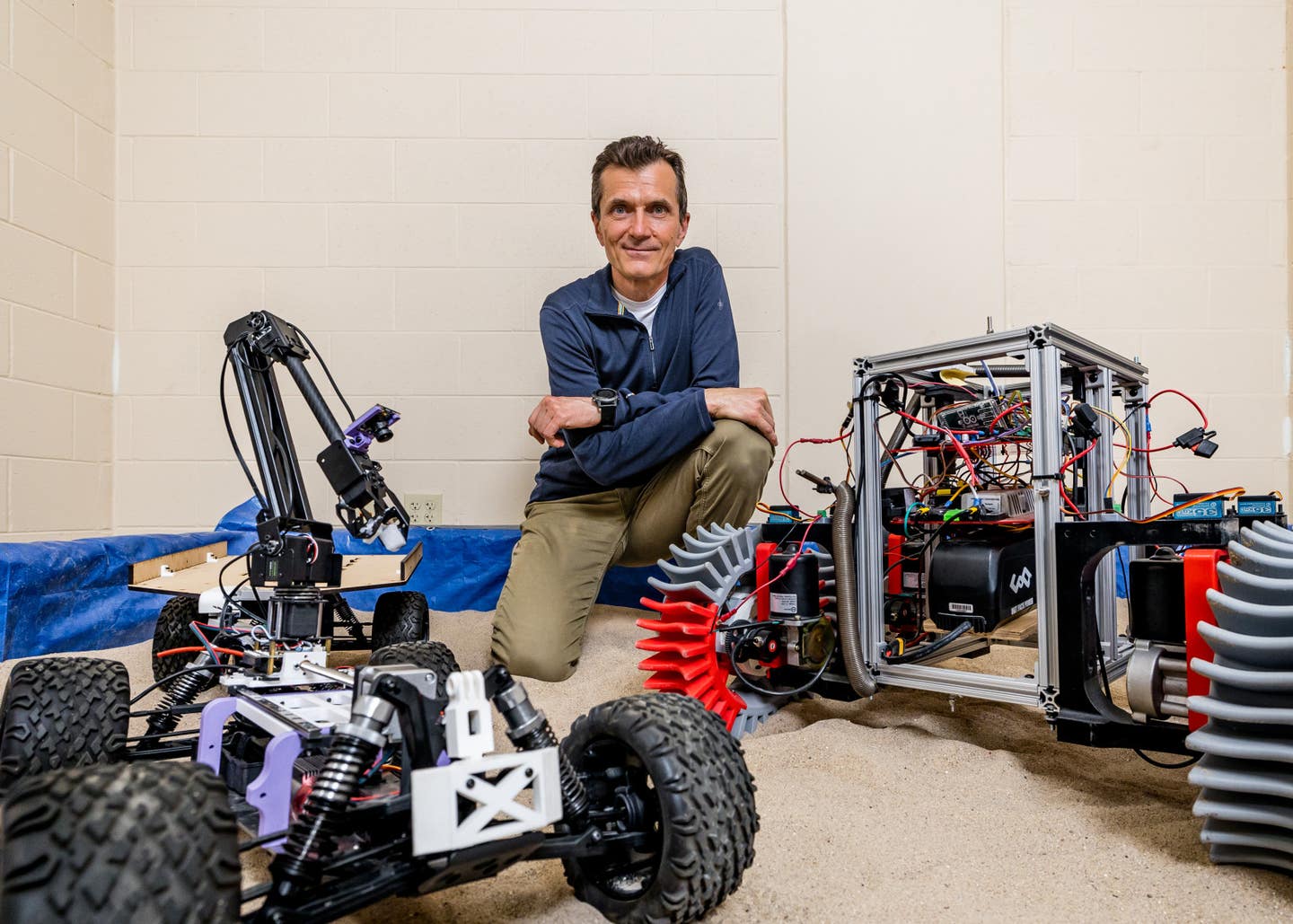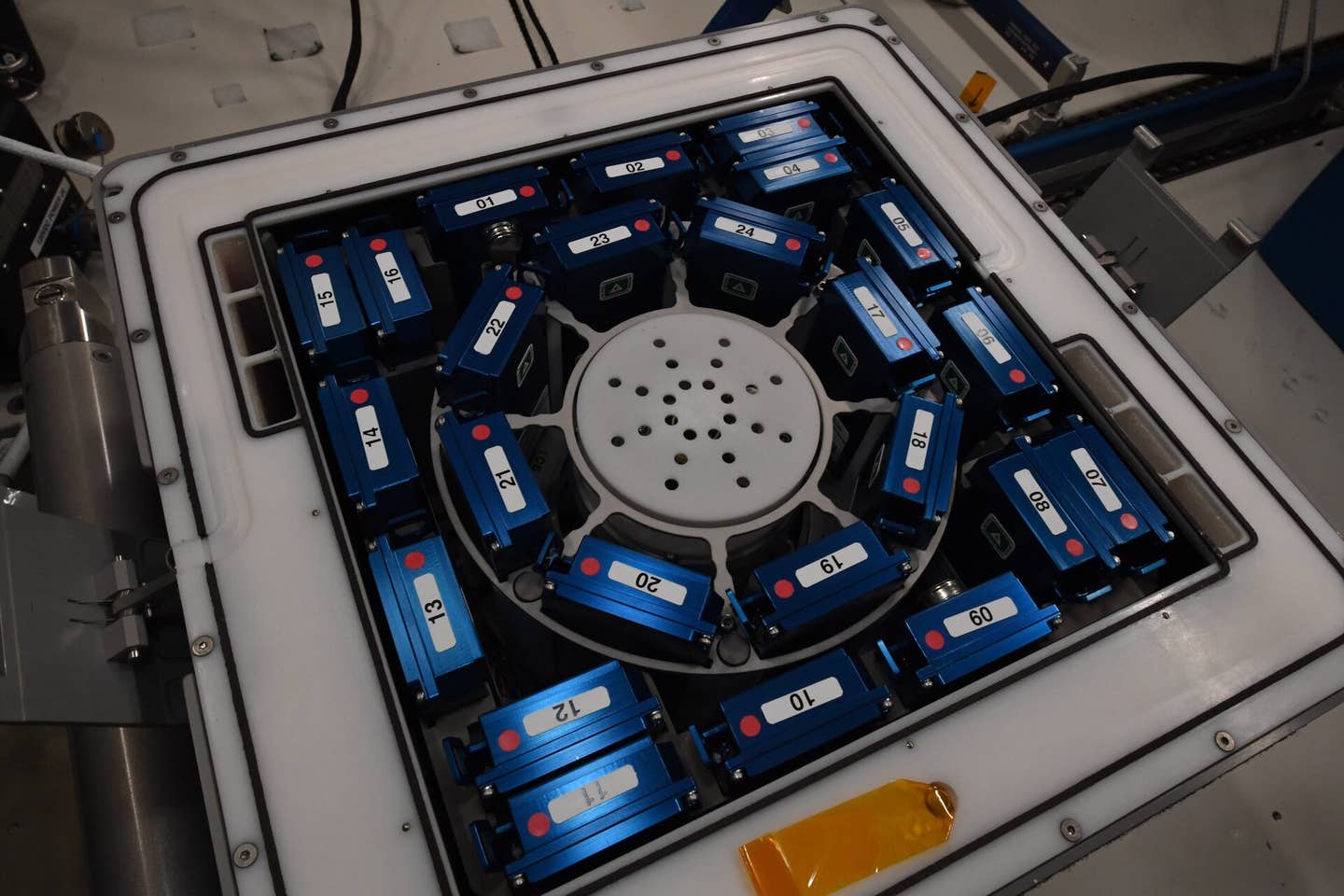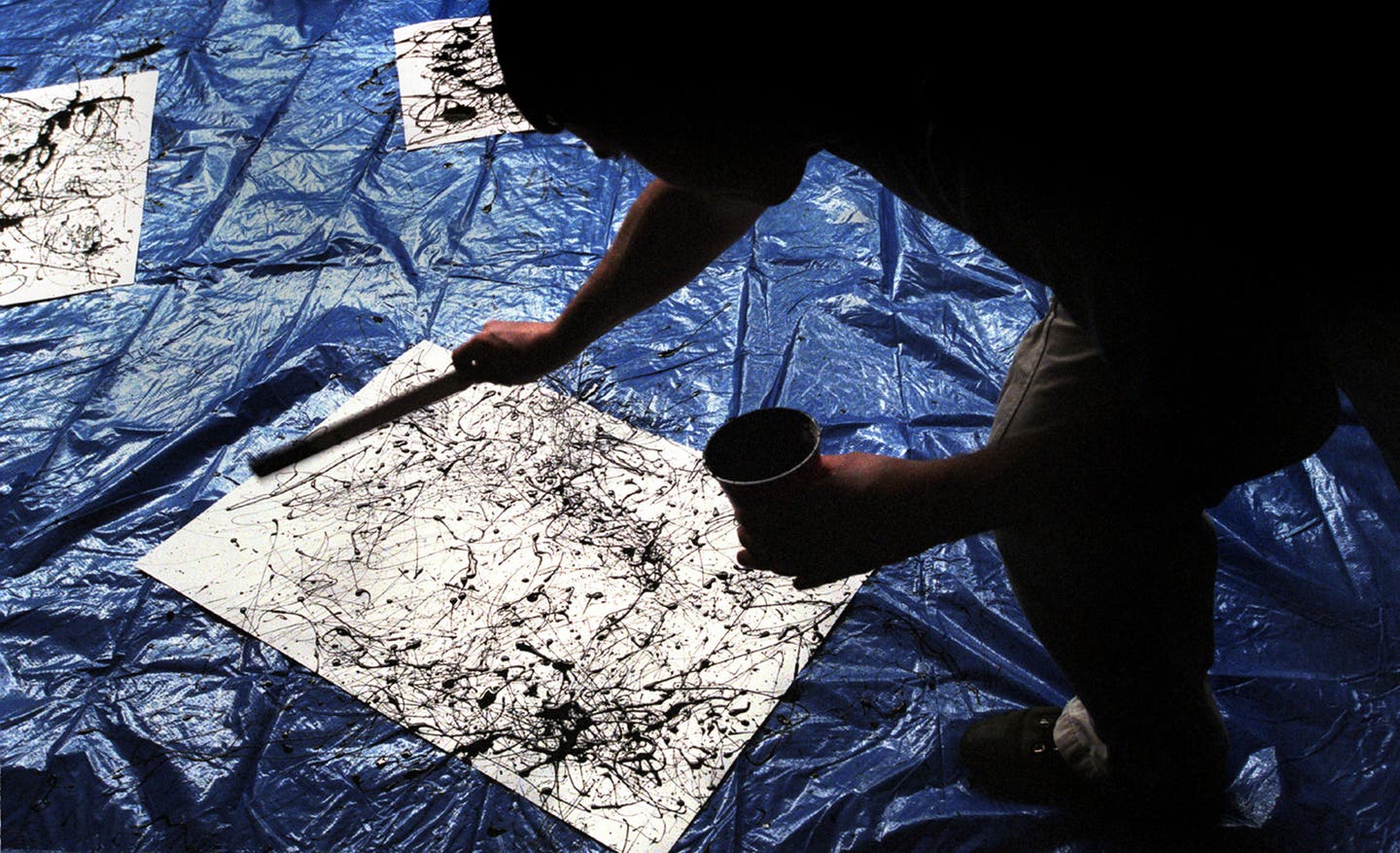New discovery could change the way future rovers are designed and tested
A UW–Madison simulation tool shows that traditional rover testing on Earth misrepresents how vehicles behave in low-gravity environments.

Earth tests for space rovers may be flawed. New UW–Madison simulations reveal better ways to model rover behavior on Moon and Mars. (CREDIT: Joel Hallberg)
As space agencies race to set foot on the Moon, Mars, and elsewhere, a not-so-glamorous problem could be the key to success: the functionality of a rover's wheels in alien dirt. When NASA's Spirit Mars rover became stuck in Martian sand in 2009, it was a wake-up call that even the best machines are fallible in unfamiliar terrain. Back on our planet, the engineers worked day and night to try to release it by remote commands. But Spirit never moved again.
That failure did lead to a closer look at testing rovers here on Earth before they ever take off from the planet. What if what we are doing to test them is giving us a false sense of security? That's the question researchers at the UW–Madison set out to answer. What they discovered could change the way future rovers are designed and tested.
Gravity's Hidden Influence
When one deploys a rover to the Moon or Mars, engineers typically design a test rover that is a smaller version. On the Moon, gravity is just one-sixth as strong as Earth's. Testers simulate that by having the rover be one-sixth its original weight and driving it across desert sand to observe how it will move. That has been done for decades.
But something won't work. Although the little rover may feel as heavy as it would on the Moon, the sand that it travels on is still pulled by Earth's more powerful gravity. And that makes all the difference.
Dan Negrut, a professor of mechanical engineering at University of Wisconsin–Madison, says that Earth's gravity is pushing down on the sand, compacting and hardening it. This gives a false impression of how well the rover handles. In the Moon, the ground is much looser — "fluffier" is the way Negrut puts it — and this would result in traction being harder to maintain. Rovers would readily sink or slip in such kind of ground.
"Looking back, it's not that hard: We have to consider not only the gravity pulling on the rover but also how gravity influences the sand in order to better understand how the rover will behave on the moon," Negrut says.
A Smarter Way to Simulate
To solve this challenge, Negrut and his team developed a better response: a computer program named Chrono. Originally built at UW–Madison and developed further through collaboration with researchers in Italy, Chrono is an open-source physics simulator that is highly advanced. By using Chrono, it is possible to simulate how large rovers interact with the ground in low-gravity conditions without needing to leave the Earth.
The group used this simulator when they were on a project for NASA to study the VIPER rover, which was being developed for a mission to the moon. When they encountered a discrepancy between simulated results and actual tests done at the SLOPE laboratory at NASA Glenn Research Center, something did not feel right. The rover was handling much better in Earth-based tests than it did in their simulations. That inconsistency revealed the flaw in traditional testing.
Chrono's computer simulations accounted not just for the rover's weight, but for the manner in which the gravity affected the behavior of soil. What they discovered was shocking. Tests that had previously shown a rover could roll with ease on soft ground were actually painting a one-sided picture.
On a low-gravity environment like the Moon or Mars, the soil breaks up more easily, which means the danger of the rover getting stuck is higher. Their study provided a glimpse into the importance of accurate terramechanics — the science of how a vehicle moves over soil and other loose material.
The Physics Behind the Problem
Why is this such a big deal? When a rover crosses a planet or moon, its grip dictates whether it can get the job done. If it slips, it can't gather information, sample materials, or position itself to send data back.
And while the concept of lightening a rover's weight in order to accommodate lunar gravity is rational, it doesn't consider the manner in which soil behaves differently when gravity is less strong. In greater gravity, like on Earth, particles pack tightly against each other. That hardens the soil and makes it more dense. In low gravity, particles are loose, creating a surface that behaves more like powder than packed sand.
Parabolic flights, in which researchers experience brief periods of low gravity, have shown the effect. But they are single-shot and short-term. Chrono, however, allows long, repeatable, and controllable simulation that gets the essence. It's not just a device to simulate motion but also to allow research in resource tasks like digging and bulldozing — tasks critical to long-term missions that will set up infrastructure or gather usable resources on other planets.
Beyond the Last Frontier
Chrono's impact extends beyond the universe. The identical simulation technology used to test moon rovers is conquering Earth-bound engineering dilemmas. The U.S. Army uses it to study how tanks move over rocky terrain. Companies rely on it to mimic complex machinery under real-world conditions. Even watchmakers use it to simulate millimeter gear movement.
“It’s rewarding that our research is highly relevant in helping to solve many real-world engineering challenges,” says Dan Negrut of UW–Madison. “I’m proud of what we’ve accomplished.”
Even though Chrono is open-source and free, it's built to an unusually high standard for educational software. Negrut insists that few tech companies have such tools in this particular niche. "There are some types of applications that are relevant to NASA and planetary exploration where our simulator can solve some problems that no other tool can," he says.
The UW–Madison team stays on top of Chrono to keep themselves ahead. The work is funded by NASA, the National Science Foundation, and the U.S. Army Research Office and is still available for public access. "Our concepts are in the public space, and the competition can adopt them right away, which pushes us to keep going," Negrut says.
The researchers hope their findings encourage space agencies to rethink the testing of rovers. A rover that survives Earth simulations might fail on the Moon. In space exploration, smarter sims may be as vital as better hardware. With better tools like Chrono, future missions could avoid costly failure and continue to push the boundaries of discovery.
Research findings are available online in the Journal of Field Robotics.
Related Stories
- NASA rover discovery suggests Mars once hosted microbial life
- Curiosity rover reveals ancient carbon cycle on Mars
- Mars Rover Discovers Traces of Ancient Martian Beaches
Like these kind of feel good stories? Get The Brighter Side of News' newsletter.
Mac Oliveau
Science & Technology Writer
Mac Oliveau is a Los Angeles–based science and technology journalist for The Brighter Side of News, an online publication focused on uplifting, transformative stories from around the globe. Passionate about spotlighting groundbreaking discoveries and innovations, Mac covers a broad spectrum of topics—from medical breakthroughs and artificial intelligence to green tech and archeology. With a talent for making complex science clear and compelling, they connect readers to the advancements shaping a brighter, more hopeful future.



